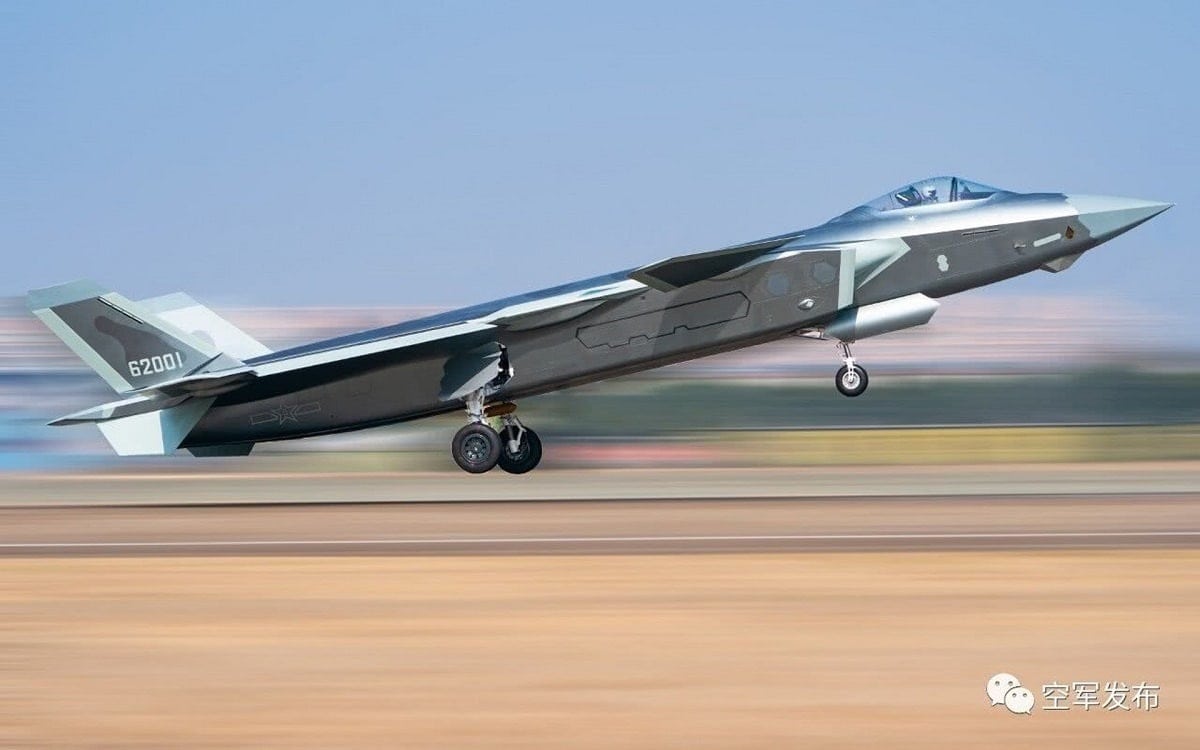Flying a next-generation fighter plane is challenging, to say the least. The sensors are bringing in a ton of information every second. Weapons systems are complicated. Enemy interceptors could be hot on your path. The pilots have to those considerations and keep the airplane moving at high speeds. Based on these combat needs, China’s Air Force has reportedly added another seat and a co-pilot to its J-20 fighter.
The J-20 Mighty Dragon fifth-generation fighter has stealth characteristics, although all defense analysts do not agree that it is completely stealthy. Despite this limitation, China is ready to produce more of the fighters with estimates stating that the Chinese could already have 150 of them. Now the Chinese may have a new variant called the J-20B. Recent images have surfaced, and this version appears to show a cockpit with room for a co-pilot.
American Next-Generation Fighters Have Single-Seats
The F-22 and the F-35 are single-seat warplanes. It’s not known whether the U.S. military would add another seat for a co-pilot. Other planes have the second seat. The F-16B is a variant with two seats. The Navy’s F-14 Tomcat had a back seat for a Radio Intercept Officer (RIO) that kept an eye on communications and weapons. The relationship between pilot and RIO was made famous in the movie Top Gun.
Is a Two-seat Fighter Obsolete?
Is a back-seater really necessary in fighter planes?
Two seats are indeed needed for training. It would also seem that another pilot couldn’t hurt. It would give an extra set of eyes and hands to operate weapon systems and radars. Artificial intelligence improvements will come to cockpits in the future, and this may require a co-pilot to control. If the fighter plane operates drones in the “loyal wingman concept,” it would make sense to have a back-seater. But adding a back seat comes with trade-offs. The airplane changes because the co-pilot needs life support systems that make it heavier, and this could affect performance in dog-fighting.
One Pilot May Be All That We Need
Perhaps American fighter pilots are superior to the Chinese and one pilot flying the F-22 and F-35 can do the job in a highly proficient manner. Americans have had decades of combat experience, while the Chinese pilots have none. American fighter pilots are likely better flying at night and in bad weather. But the Chinese are now reportedly training to fix those shortcomings. U.S. naval aviators are probably more adept at night carrier landings.
However, we should consider that fighter missions are only going to get more complicated over time. A co-pilot can come to the rescue if the main pilot is incapacitated. Another brain in the cockpit can perhaps better handle all the incoming data from sensors and help control weapons systems. Airplanes such as the J-20B that have stealth characteristics will theoretically fly closer to enemy defense systems and airplanes, so the back-seater can help during this type of combat.
Thus, the U.S. military may change its mind and add a second seat to its cockpits in either the F-22 or F-35. But again, this would require extra room that would take away from the amount of fuel the fighter planes could hold. It will be interesting to see how many two-seat J-20B airplanes will be built and how well they test in the air.
1945’s new Defense and National Security Editor, Brent M. Eastwood, PhD, is the author of Humans, Machines, and Data: Future Trends in Warfare. He is an Emerging Threats expert and former U.S. Army Infantry officer.

